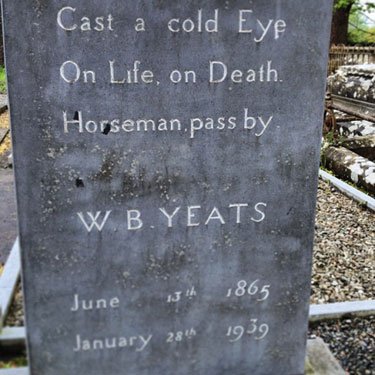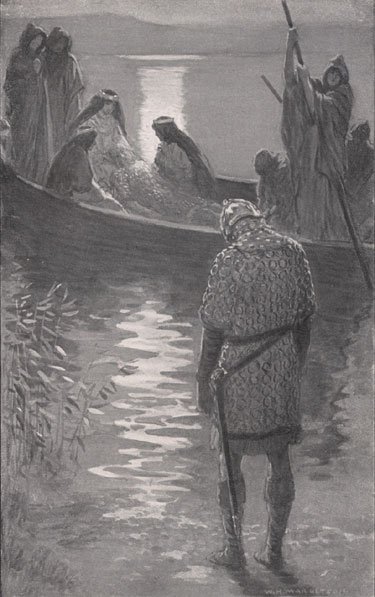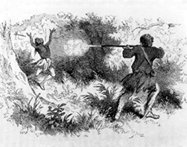I
Swear by what the sages spoke
Round the Mareotic Lake
That the Witch of Atlas knew,
Spoke and set the cocks a-crow.
Swear by those horsemen, by those women
Complexion and form prove superhuman,
That pale, long-visaged company
That air in immortality
Completeness of their passions won;
Now they ride the wintry dawn
Where Ben Bulben sets the scene.
Here’s the gist of what they mean.
II
Many times man lives and dies
Between his two eternities,
That of race and that of soul,
And ancient Ireland knew it all.
Whether man die in his bed
Or the rifle knocks him dead,
A brief parting from those dear
Is the worst man has to fear.
Though grave-diggers’ toil is long,
Sharp their spades, their muscles strong.
They but thrust their buried men
Back in the human mind again.
III
You that Mitchel’s prayer have heard,
“Send war in our time, O Lord!â€
Know that when all words are said
And a man is fighting mad,
Something drops from eyes long blind,
He completes his partial mind,
For an instant stands at ease,
Laughs aloud, his heart at peace.
Even the wisest man grows tense
With some sort of violence
Before he can accomplish fate,
Know his work or choose his mate.
IV
Poet and sculptor, do the work,
Nor let the modish painter shirk
What his great forefathers did.
Bring the soul of man to God,
Make him fill the cradles right.
Measurement began our might:
Forms a stark Egyptian thought,
Forms that gentler Phidias wrought.
Michael Angelo left a proof
On the Sistine Chapel roof,
Where but half-awakened Adam
Can disturb globe-trotting Madam
Till her bowels are in heat,
Proof that there’s a purpose set
Before the secret working mind:
Profane perfection of mankind.
Quattrocento put in paint
On backgrounds for a God or Saint
Gardens where a soul’s at ease;
Where everything that meets the eye,
Flowers and grass and cloudless sky,
Resemble forms that are or seem
When sleepers wake and yet still dream.
And when it’s vanished still declare,
With only bed and bedstead there,
That heavens had opened.
Gyres run on;
When that greater dream had gone
Calvert and Wilson, Blake and Claude,
Prepared a rest for the people of God,
Palmer’s phrase, but after that
Confusion fell upon our thought.
V
Irish poets, learn your trade,
Sing whatever is well made,
Scorn the sort now growing up
All out of shape from toe to top,
Their unremembering hearts and heads
Base-born products of base beds.
Sing the peasantry, and then
Hard-riding country gentlemen,
The holiness of monks, and after
Porter-drinkers’ randy laughter;
Sing the lords and ladies gay
That were beaten into the clay
Through seven heroic centuries;
Cast your mind on other days
That we in coming days may be
Still the indomitable Irishry.
VI
Under bare Ben Bulben’s head
In Drumcliff churchyard Yeats is laid.
An ancestor was rector there
Long years ago, a church stands near,
By the road an ancient cross.
No marble, no conventional phrase;
On limestone quarried near the spot
By his command these words are cut:
Cast a cold eye
On life, on death.














